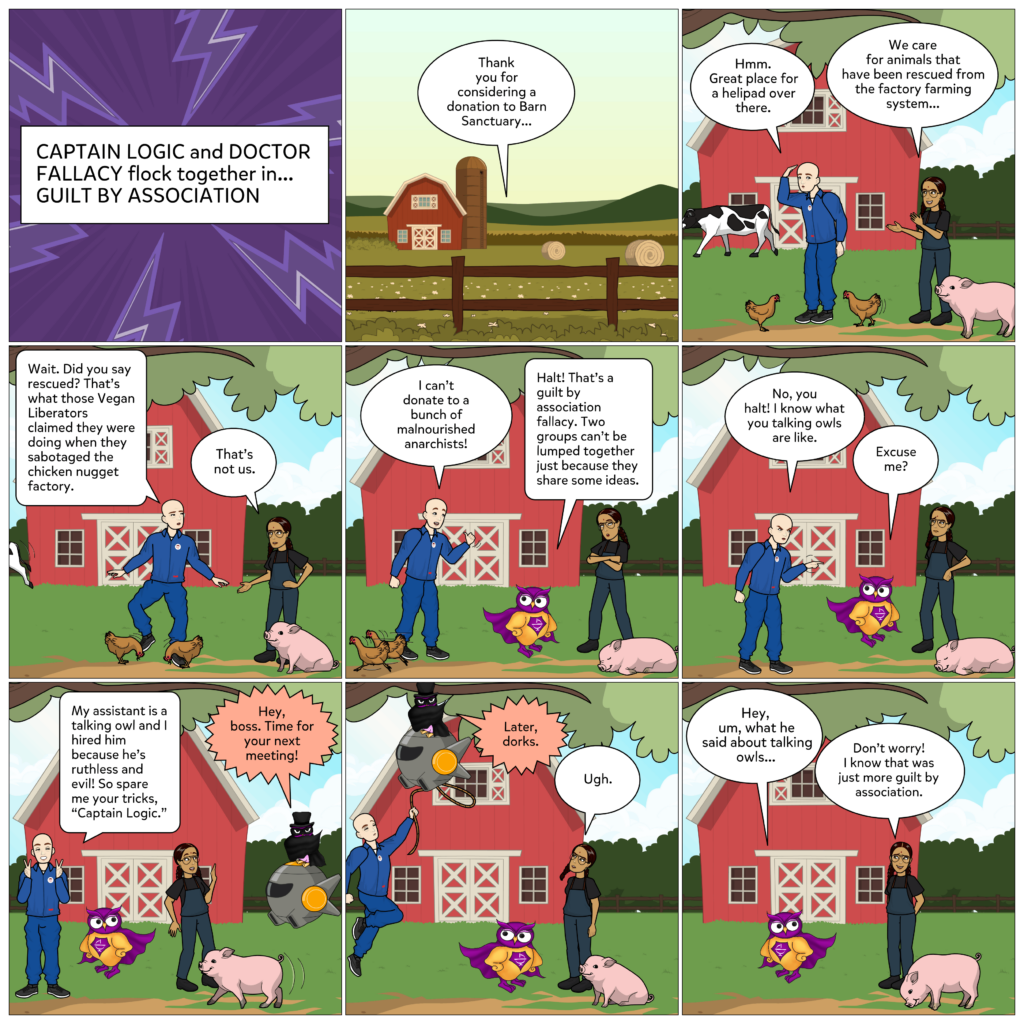La falacia de la culpabilidad por asociación se produce cuando alguien relaciona a un oponente con un grupo demonizado de personas o con una mala persona con el fin de desacreditar sus argumentos. La idea es que la persona es "culpable" por el simple hecho de ser similar o estar asociada a este grupo "malo" y, por lo tanto, sus argumentos deben ser desestimados.
Las falacias de culpabilidad por asociación a menudo pueden funcionar en conjunto con la generalización apresurada o las falacias ad hominem, especialmente cuando se utilizan para atacar a un grupo específico de personas.
Aunque las falacias de culpabilidad por asociación suelen incluir estereotipos injustos, no siempre es así. La culpa por asociación puede ser incluso objetivamente exacta. Por ejemplo, imagine que dos políticos apoyan ambos un proyecto de ley sobre almuerzos escolares gratuitos. Sin embargo, uno de estos políticos tiene un conocido historial de corrupción. A pesar de estar basado en hechos, seguiría siendo ilógico utilizar al político corrupto como medio para desacreditar al segundo político y sus ideas.
En nuestro cómic a continuación, usted'll encontrar dos casos de la falacia de culpabilidad por asociación.

Para ver una versión del cómic compatible con lectores de pantalla, haga clic en las siguientes imágenes:
Primero, vemos cómo se desacredita al santuario de animales por su uso de un lenguaje similar al de una organización de derechos de los animales más agresiva. Luego, vemos cómo los argumentos del Capitán Lógica son desechados porque es un búho parlante como el conocido alborotador Doctor Falacia. Ambas falacias de culpabilidad por asociación no se comprometen con las ideas reales que se presentan.
La culpabilidad por asociación es una trampa en la que se cae a menudo y puede encontrarse en circunstancias muy diversas, desde campañas políticas hasta entrevistas de trabajo. Invocar a una persona sospechosa o a un grupo demonizado puede ser un atajo para persuadir a una audiencia, porque al hacerlo se aprovecha el conocimiento o los temores existentes. A menudo, esta falacia se despliega para distraer a una audiencia o enturbiar las aguas. Siempre debemos intentar centrarnos en la cuestión real que se está debatiendo, en lugar de caer en desviaciones como la culpabilidad por asociación.
